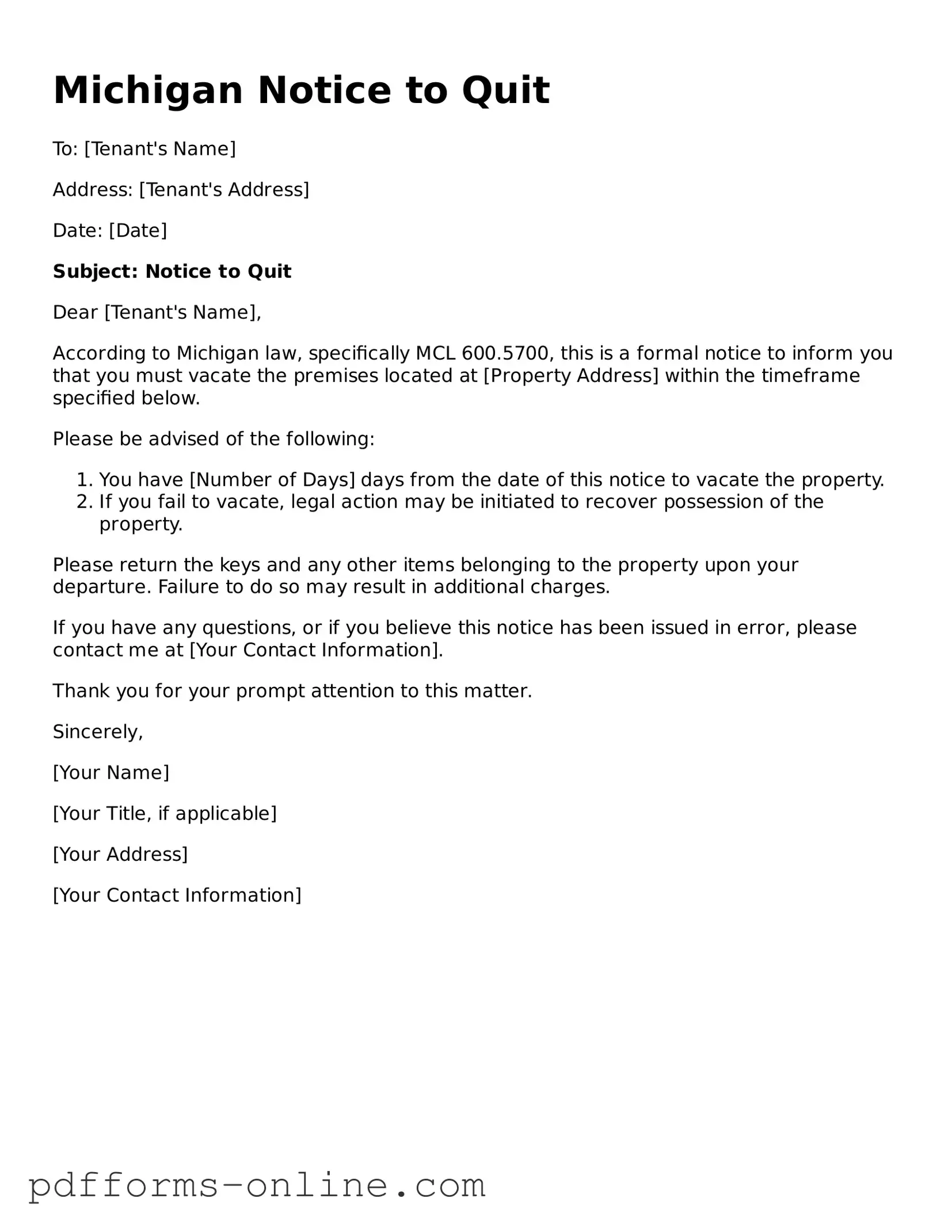Valid Michigan Notice to Quit Template
The Michigan Notice to Quit form serves as a formal notification from a landlord to a tenant, indicating the intent to terminate a lease agreement. This document outlines the necessary steps and timeline for the tenant to vacate the premises, ensuring compliance with state regulations. Understanding this form is crucial for both landlords and tenants to navigate the complexities of rental agreements effectively.
To begin the process, fill out the form by clicking the button below.
Open This Notice to Quit Online
